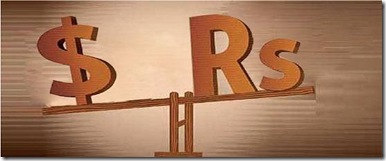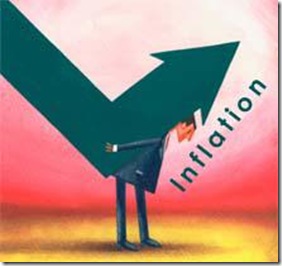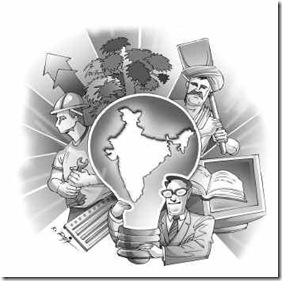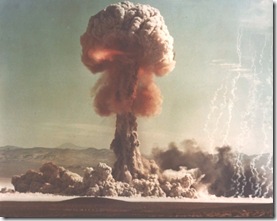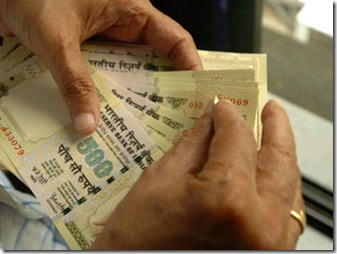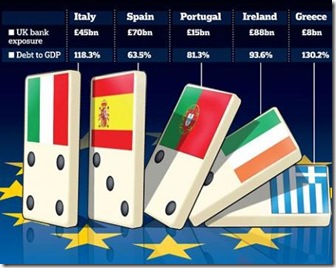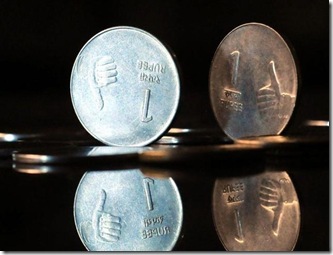Right from independence in 1947, Government of India had retained control over the value of rupee and had a fixed exchange system, where the rupee was pegged to the value of a basket of currencies of major trading partners. This trend continued until the economic liberalization of India. Here are Top 10 Reasons Rupee Devalued from Rs.5/$ in 1947 to Rs.60/$ Now.
First Major Devaluation of 1966
For the first two decades, India had almost a constant peg against the dollar at Rs.4.75/$. Then things changed in 1966. India had just fought two major wars (with Pakistan in 1947 and China in 1962). India also had three prime ministers in a span of three years (Nehru, Shastri & Indira) after 17 years of one man rule. The famine of 1966 shook the country, which was considered one of the worst after Independence. In 1966, India faced high inflation, large government budget deficits, and a poor balance of payments. Furthermore, the Government of India had a budget deficit problem and could not borrow money from abroad or from the private corporate sector, due to that sector’s negative savings rate. With nowhere to go and no more dollars, the Indian government announced a 57% depreciation of the rupee overnight fromRs.4.75/$ to Rs.7.5/$ on June 4, 1966. You can read how currencies are devalued here.
Inflation of 1980s
From 1966 to 1980, rupee stayed constant. India’s primary imports right from 1947 have been gold and oil. The 1979 energy crisis and gold’s skyrocketing prices in early 1980s left India with no place to go. This further increased the trade deficit and increase in inflation that madeIndian rupee to slowly decline in value. From about Rs.7.85/$ in 1980, we reached about Rs.17/$ by 1991.
1991 Crisis
In July 1991, we hit another major crisis. Right from Independence, Soviet Union was major importer of Indian goods. With the fall of USSR in 1991, India had a major problem as India’s biggest buyer was in turmoil. Exports dwindled significantly. The Gulf War of 1991 was another blow to Indian economy as oil prices shot up significantly. After the death of Rajiv Gandhi in 1989, Indian was led by two incompetent leaders one after the other who left Indian economy in gross neglect until Narasimha Rao was sworn in an as the PM in 1991. India was in a perfect economic storm. In a triple blow, India’s primary buyer was no more, India’s primary seller was at war and in the middle, production stalled due to political crisis at the center. Overnight rupee was devalued by over 50% from about Rs.17/$ to about Rs.25/$.
Economic Liberalization
In 1993, Indian finance minister Manmohan Singh let rupee to float a little freely. The rupee was allowed to be traded by traders without a forced peg such as the one kept by China. Rupee value started to slide as the government was no longer controlling the prices, fully and started to reflect the reality. From about Rs.27/$ it slid to Rs.35/$ by 1997.
1997 Asian Financial Crisis
The 1997 Asian financial crisis was one of the biggest events in East Asia as economies such as Thailand, Indonesia and South Korea collapsed. From about Rs.35/$, rupee went down to Rs.39/$ as investors were quitting Asia en masse.
1998 Pokhran-II
When Prime Minster of Indian announced the successful nuclear testing in Pokhran, US, Japan and other European countries immediately imposed sanctions on India, limiting investments. In just a couple of months, rupee sunk to Rs.43/$. Then rupee started moving sideways and the lowest point was reached in 2002 at Rs.48/$ (when BSE was its lowest and real estate was listless).
2000-2007 Revaluation
In the period of 2000-2007, the Rupee stopped declining and stabilized ranging between Rs.44-48/$. Rupee started recovering its losses and started moving up and reached about Rs.39/$ by 2007. This was on account of sustained foreign investment flows into the country. This affected major IT exporters and BPOs, who were incurring heavy losses given the appreciation of rupee. After this, SHTF for Indian economy.
Global Financial Crisis of 2007-08
Otherwise known as the global financial crisis, the financial crisis caused investors to quit all emerging markets, including India. The crisis had its inception in US and threatened to collapse major economies around the world. This pushed the rupee from Rs.39/$ to Rs.51/$ by March 2009. In the next 2 years, rupee recovered most of the loss due to economic optimism and rebound in US markets.
9. Eurozone Crisis of 2011
By the fall of 2011, world noticed another financial crisis. This time in Greece, Spain and Portugal and some other European countries. Similar to other times, investors started pulling out from Asian and European markets. To add fire to the fuel, Indian government’s budget positions was getting worse (due to profligate overspending). Indian rupee thus under these circumstances sunk from Rs.44/$ in August 2011 to about Rs.56/$ by June 2012.
Current Scenario
There are many reasons rupee slid to Rs.60/$ in June 2013. The dollar has strengthened from the financial crisis of 2008, but the same has not been the case with Rupee. Further, fiscal deficit and inflation have acted as fire in the fuel. Falling gold prizes have dampened the government of India’s plans to reduce gold import (Gold and oil are India’s primary imports). Investors have lost their trust in Rupee and have been very cautious to invest in Indian markets. Exporters have been wary of bringing dollars back home and thus keep their foreign earnings abroad expecting Rupee to fall further.


















